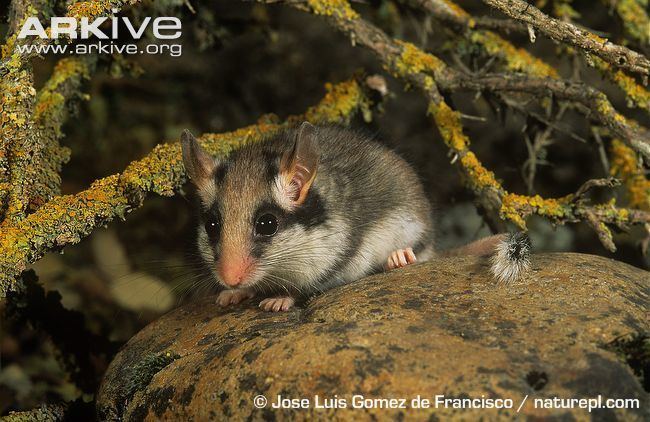Order Rodentia Family Gliridae Rank Species | Phylum Chordata Suborder Sciuromorpha Genus Eliomys Higher classification Eliomys | |
 | ||
Similar Eliomys, Dormouse, Edible dormouse, Hazel dormouse, Rodent | ||
Garden dormouse meaning
Features

Garden dormice are typically 10 to 15 cm (3.9 to 5.9 in) in length, with the tail adding 8 to 14.5 cm (3.1 to 5.7 in). They weigh 60 to 140 g (2.1 to 4.9 oz). The coat is gray or brown, with a white underside. The garden dormouse can be recognized by black eye markings, relatively large ears, short hair, and a white tassel at the end of the tail.
Range and habitat

In spite of its name, the garden dormouse's main habitat is the forest, though it can also be found in fruit-growing regions. It is particularly common in southern Europe, but its range extends into the north. Garden dormice are often found in the Alps, the Bavarian Forest, and the Ore Mountains.

The species is also present in northern Germany, but that population is apparently not capable of large-scale reproduction. Nearby, in the Netherlands, it is nearly extinct: in 2007, researchers reported finding only nine animals in two woods in the province of Limburg, where it used to be common. They suggested this is a result of the landscape becoming increasingly monotonous, and due to climate change, which they said interrupts hibernation.
Way of life

Garden dormice are primarily nocturnal, sleeping in spherical nests in trees during the day. At night, they look for food, mainly eating larger insects, such as grasshoppers and beetles, and snails, eggs, young nestlings, small rodents, and spiders, as well as berries, fruit, and nuts, such as acorns and beechnuts. While omnivorous, the diet of dormice contains slightly more animal protein than vegetation.
The mating period lasts from April to June. During this time, the female indicates her readiness to mate by squeaking loudly. The young are usually born in litters of three to seven, after a gestation period of 23 days. Blind and naked at birth, they open their eyes after about 18 days, and are nursed until they are one month old. They become independent at two months of age, but do not reach sexual maturity until the next year. They have a life expectancy of about five years.
It is not unusual for a garden dormouse to eat one of its unfortunate rivals during the mating season. Cannibalism is also observed occasionally when the animal is coming out of hibernation.
Classification
On the islands of the Mediterranean Sea, all of the several subspecies of garden dormouse are very rare. These are the Sardinian garden dormouse (E. q. sardus), the Sicilian garden dormouse (E. q. dichrurus), the Liparian garden dormouse (E. q. liparensis), the Balearic garden dormouse (E. q. gymnesicus) and the Formentera Island garden dormouse (E. q. ophiusae), which is notable for its larger size and all-black tail. The populations of western Asia and north Africa, on the other hand, have recently been separated into their own species, Eliomys melanurus.
